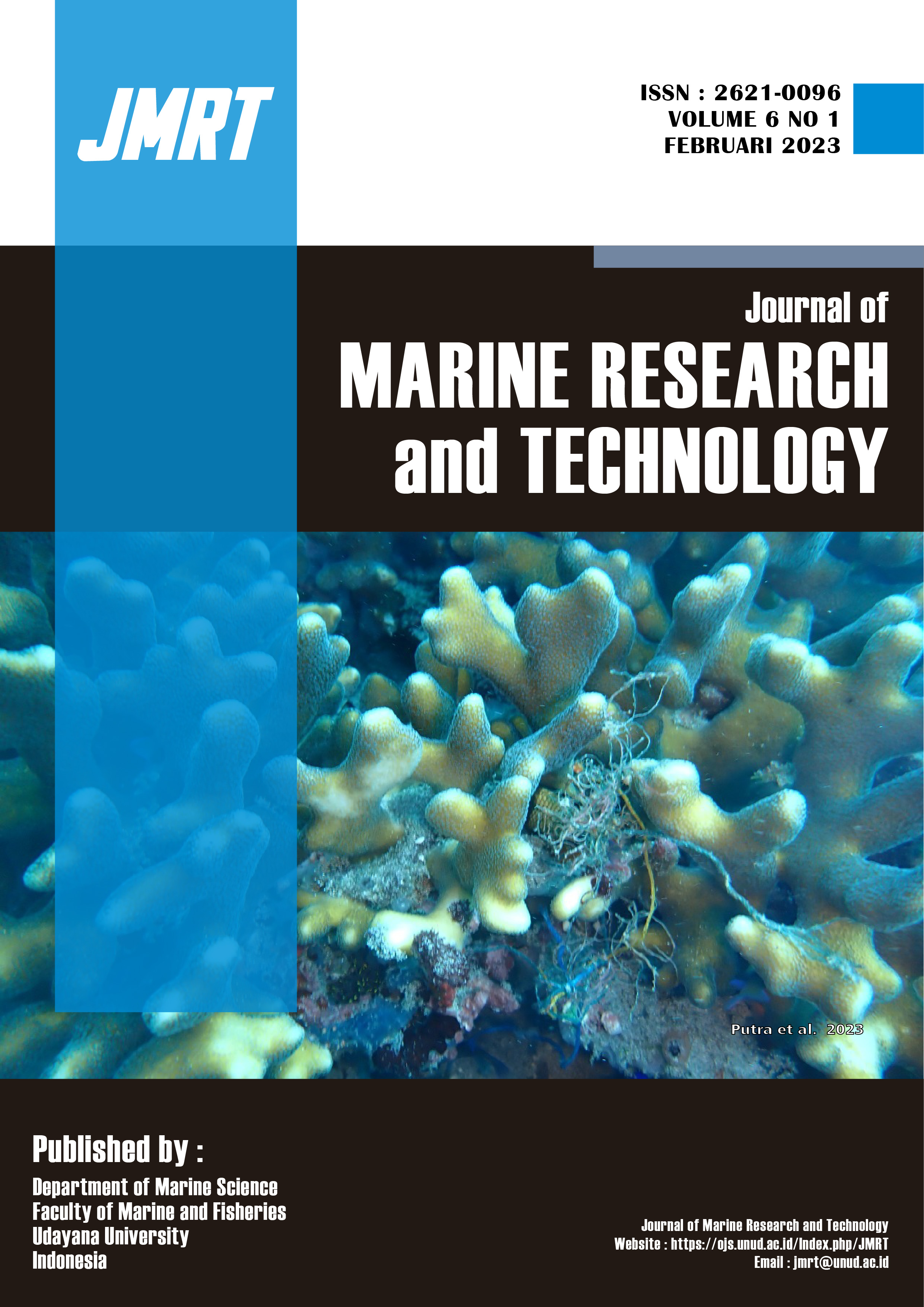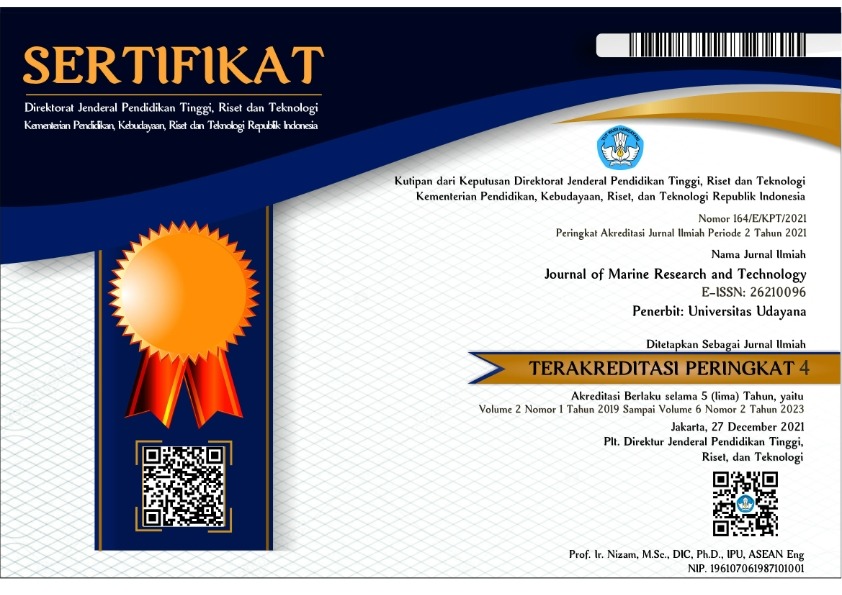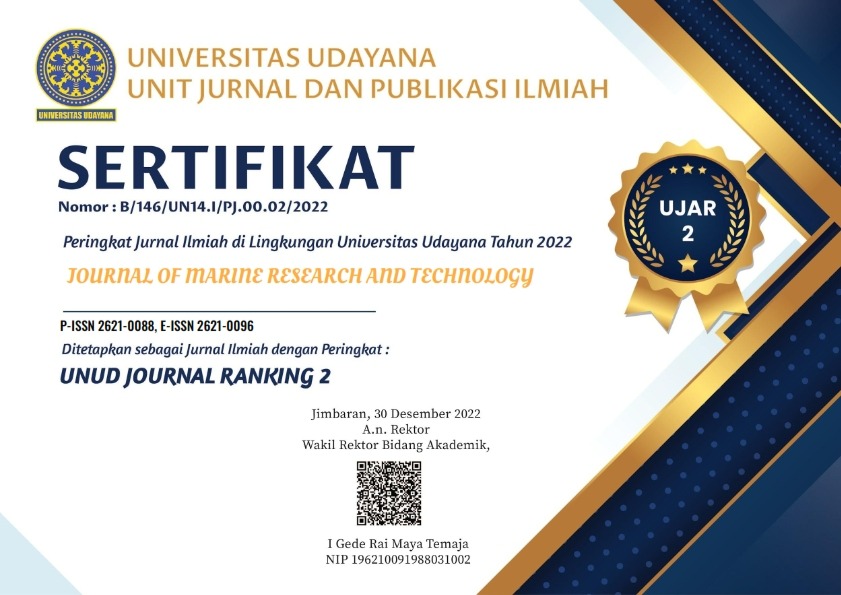Distribusi Pencemaran Sampah Plastik pada Sempadan Sungai di Bali yang Bermuara di Perairan Selat Bali dengan Analisis Generalized Additive Models (GAM)
Plastic; Waste;Riverbanks; CSIRO; GAM
Abstract
Plastic waste in the oceans is a global problem which becomes a primary concern. The oceans become the final waste shelter that comes from land. Rivers essentially distribute plastic waste from the ground to the sea. Still, few studies currently examine waste distribution on riverbanks, especially rivers that discharge into the Bali Strait. This study aimed to determine the distribution of plastic waste along rivers in Bali Island that discharge into Bali Strait. Waste data was collected using the method developed by CSIRO (Commonwealth Scientific and Industrial Research Organisation). The data collected was used to generate prediction models with GAM to predict the distribution of plastic waste on riverbanks. The GAM method was chosen because it can accommodate non-linear influences; furthermore, GAM uses the smooth function to substitute details of parametric relationships on covariates so that it would give a good prediction. The distribution of plastic waste in 30 rivers was predicted. This research data showed that the most common waste found was a plastic waste at 90%, and non-plastic waste was found at 10%. Based on the prediction, most of the distribution of plastic waste along these 30 rivers had a relative concentration of plastic waste of about 0-20%. The highest concentration of plastic waste was found on the riverbanks of Selanbawak village, Pekutatan village, Pulukan village, Pendem village, and Tuwed village, with 80-100%. The riverbanks close to markets and tourism destinations and the number of populations with a strong relationship with smooth contributions caused relatively high plastic waste concentration. The prediction of the total plastic waste leakage at the riverbanks of the 30 rivers is 3,438,472 pieces, which this plastic waste will pollute Bali Strait.
Downloads
Copyright Notice
The copyright to this article is transferred to Journal of Marine Research and Technology (JMRT). The copyright transfer covers the exclusive right and license to reproduce, publish, distribute and archive the article in all forms and media of expression now known or developed in the future, including reprints, translations, photographic reproductions, microform, electronic form (offline, online) or any other reproductions of similar nature.






